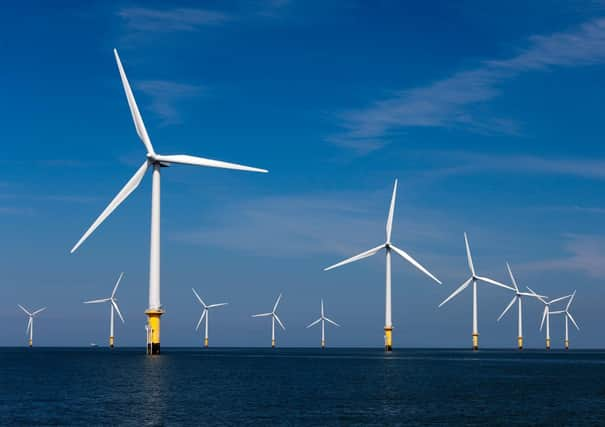Riding a wave of opportunities in Scottish waters - comment


ScotWind is the first round of offshore wind leasing in Scottish waters in a decade and is being run by Crown Estate Scotland (CES) in its role as manager of Scotland’s seabed.
Investors and developers can register their interest in obtaining an “option agreement” with CES and successful applicants will be granted leases to build offshore wind farms in areas of seabed identified as suitable in the Scottish Government’s Sectoral Marine Plan (SMP) for offshore wind, which has been published in draft form.
Advertisement
Hide AdAdvertisement
Hide AdOne part of the process attracting a lot of attention is the need for applicants to prepare and submit a “supply chain development statement,” setting out how they plan to engage with and utilise the supply chain to develop their projects. This must include information on the location of supply chain activity and evidence of how the commitments in the plan can be met.


CES said in its launch summary document that it was encouraging “realistic” supply chain commitments. Over the last five to ten years there has been considerable pressure for offshore wind to radically reduce costs, and particularly to reduce consumer cost to the lowest point. Reduction in cost in the offshore wind sector is a major success story. However, this focus has implications for local supply chain options.
Some may be puzzled that, for ScotWind, CES insists that supply chain commitments that must be made in the bid application will not then be “scored” and so will not form part of the assessment to identify successful bidders.
Commitments
It is also worth noting that once through the bidding process, applicants will become contractually committed to update, and endeavour to fulfil, their supply chain commitments, and that developers who secure a lease will be measured against those commitments.
Those pledges will need to be updated when the project is about to go into construction and there may be financial penalties if developers do not meet the agreed pledges, and in certain cases ultimately prevented from progressing the lease contract.
There is a tension for bidders between, on the one hand, addressing the aspirations of politicians and potential local supply chain participants and, on the other hand, developing projects to be as economic as possible to bid successfully under the Contract for Difference regime.
At the same time, CES is keen for ScotWind to attract new entrants from around the globe. New global entrants to the Scottish offshore development market may feel less obliged to be seen to be meeting politicians’ and unions’ local supply chain aspirations than existing Scottish/UK-based players.
And more bullish bidders may even be tempted to submit limited supply chain commitments on the basis that the CES launch documentation makes it clear that this will be irrelevant to the process of awarding options over seabed areas. More detail on the supply chain requirements for applicants will be keenly awaited, though this remains a moving target as CES has invited feedback on its supply chain commitment proposals by 31 July.
Advertisement
Hide AdAdvertisement
Hide AdShortly after the adopted SMP becomes available, an addendum to the ScotWind Leasing launch documentation will be published confirming final details of requirements. CES is anticipating closing applications between October 2020 and early 2021. It said total investment in ScotWind Leasing could ultimately exceed £8 billion and deliver enough electricity to power every home in Scotland, saving more than six million tonnes of carbon dioxide emissions a year.
But offshore wind is a global and very competitive market and many countries have leasing rounds under way or in prospect. Any Scottish offering must be seen to be strongly competitive, lest investors and operators be attracted to a more simplified bid process elsewhere.
Alan Cook, partner and renewable energy specialist at Pinsent Masons
A message from the Editor:
Thank you for reading this story on our website. While I have your attention, I also have an important request to make of you.
The dramatic events of 2020 are having a major impact on many of our advertisers - and consequently the revenue we receive. We are now more reliant than ever on you taking out a digital subscription to support our journalism.
Subscribe to scotsman.com and enjoy unlimited access to Scottish news and information online and on our app. Visit https://www.scotsman.com/subscriptions now to sign up.
By supporting us, we are able to support you in providing trusted, fact-checked content for this website.
Joy Yates
Editorial Director
Comments
Want to join the conversation? Please or to comment on this article.